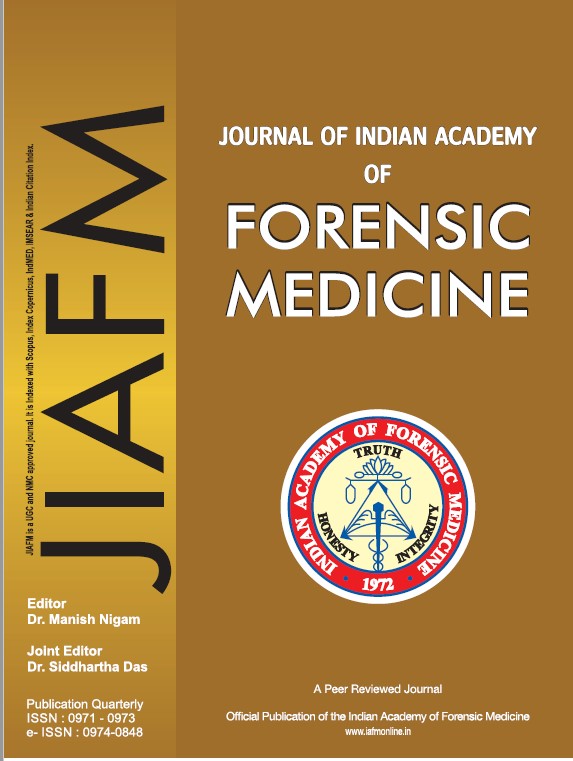Serum cholinesterase level in postmortem cases of pesticide poisoning: Devising a protocol for identifying exposure to organophosphate and carbamate compounds
Keywords:
Postmortem, Serum cholinesterase, Pesticide poisoning, Organophosphate, Carbamate, Submaximal doseAbstract
The present study was designed with the aim to suggest a protocol based on a simple, cost-effective method for investigating the postmortem cases of organophosphate and carbamate compounds (OPCC) poisonings. A prospective case-control study was conducted during the year 2015-16 involving 48 subjects aged 20-70 years old who died due to OPCC as cases and another 48 age matched controls who died due to poisoning other than OPCC. Serum cholinesterase estimation and bioassay test on an isolated strip of toad rectus abdominis muscle were done to demonstrate the presence or absence of OPCC in the serum of a deceased. Phorate (22.9%) was the commonest OPCC compound found to be abused by the cases followed by chlorpyrifos (14.6%). Histopathology showed that individual cell necrosis (75%), alveolar hemorrhage (81.3%), central vein dilation (77.1%), and necrosis of tubular epithelium (95.8%) were the predominant signs in brain, lung, liver, and kidney respectively of the cases. Postmortem serum cholinesterase level was significantly less in cases as compared to that in controls. Toad test revealed that the amplitude of submaximal dose with test serum and the percentage change in amplitude were significantly higher in the OPCC group than the non OPCC group. Toad test can be used as a simple, cost-effective and sensitive measure for detection of OPCC in blood particularly in resource constraint settings while dealing with postmortem cases due to poisoning.


